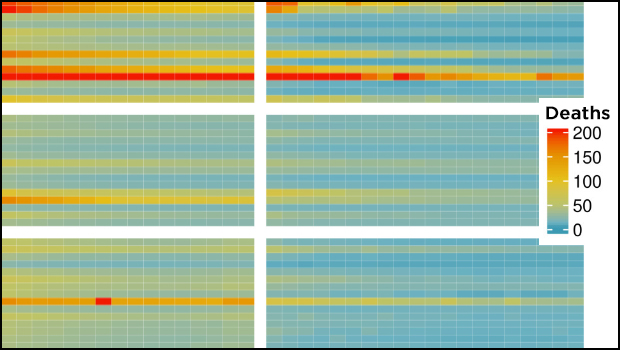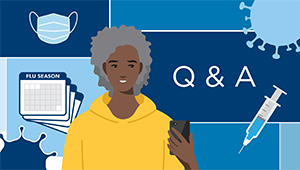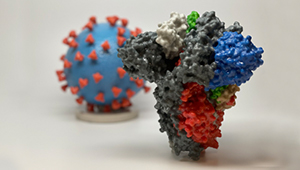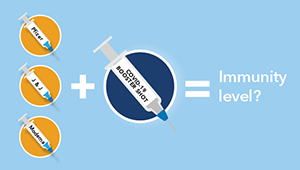The impact of vaccines: Millions of lives saved

Predicted deaths due to 10 pathogens per 100,000 population per country and region for the years 2000-2019 under no-vaccination and with-vaccination scenarios (click image for full chart). © Imperial College London
Vaccines given in last 20 years could prevent 50 million deaths in 112 countries
The life-saving impact of vaccines in low- and middle-income countries is the focus of new research led by the Vaccine Impact Modelling Consortium, including Michael L. Jackson, PhD, MPH, a Kaiser Permanente Washington Health Research Institute senior investigator.
“Our study shows that millions of lives — with the majority being children under the age of 5 — have already been saved with vaccines. If progress is sustained, a further 47 million deaths could be prevented by vaccinations given between 2020 and 2030,” says Dr. Jackson.
This would mean 97 million deaths in 112 low- and middle-income countries would be prevented by vaccination occurring between 2000 and 2030.
However, Dr. Jackson cautions that “COVID-19 has disrupted vaccine activities and could lead to a decline in coverage. It is critical that we sustain and improve vaccination coverage as we continue to tackle the COVID-19 pandemic globally.”
Vaccine impact on 10 deadly diseases
The study, published in eLife, is the largest assessment of vaccine impact before the start of the COVID-19 pandemic.
The diseases the researchers looked at included measles, hepatitis B, human papillomavirus (HPV), yellow fever, Haemophilus influenzae type b, Streptococcus pneumoniae, rubella, rotavirus, Neisseria meningitidis serogroup A, and Japanese encephalitis.
If vaccination efforts continue as planned until 2030, the team estimates that 47 million deaths from measles would be averted. The hepatitis B vaccine had the next-highest impact with 29 million deaths averted, followed by the HPV vaccine with 6.6 million deaths averted.
The study, building on previous work, used new and updated models to better understand the uncertainty ranges for many of the pathogens.
The revised modeling meant that the estimated impact of vaccinations for measles, hepatitis B, and yellow fever decreased. However, the estimated impact of HPV vaccination increased, as the coverage scenario used by the consortium for this publication is more optimistic than it was for its predecessor.
The Vaccine Impact Modelling Consortium is funded by Gavi, the Vaccine Alliance, and the Bill & Melinda Gates Foundation. The Consortium’s Coordinating institution is Imperial College London, Department of Infectious Disease Epidemiology.
This story has been adapted from a news story on this study by Imperial College London.
Healthy findings blog

COVID-19 and flu: What to expect this winter
Answers to 4 questions about COVID-19 and this season's flu, from KPWHRI's Michael Jackson, PhD, MPH.
Research

COVID-19 pandemic research at KPWHRI
Having long tracked infectious diseases and tested vaccines, KPWHRI now focuses on the novel coronavirus.
Volunteers needed

COVID-19 booster trial seeks unvaccinated volunteers
KPWHRI to access the benefits of mixing different vaccine types in NIAID-sponsored study.


